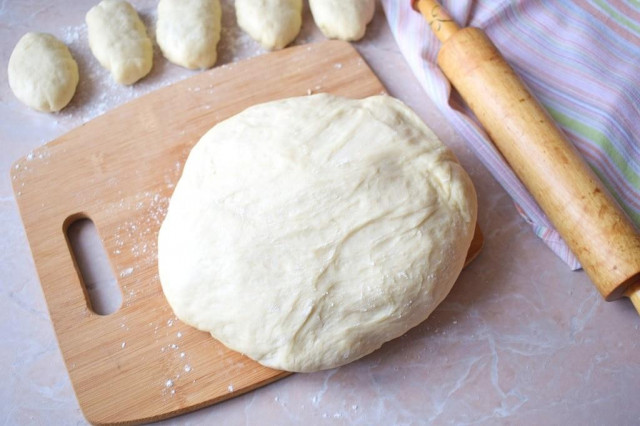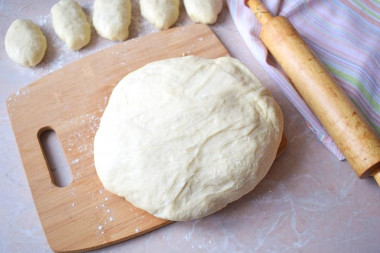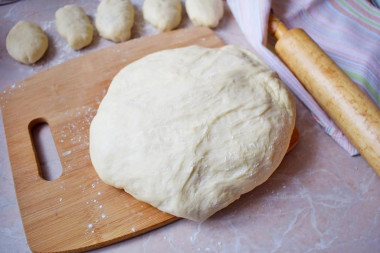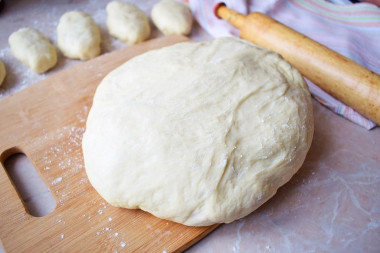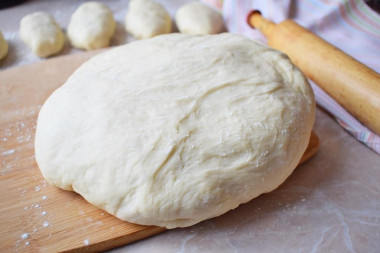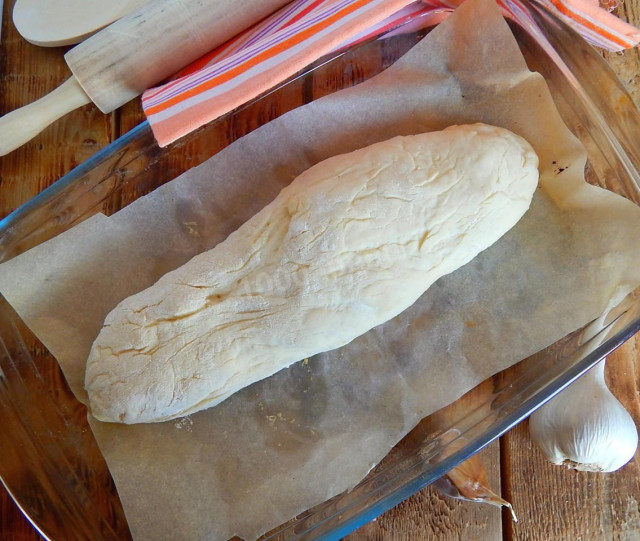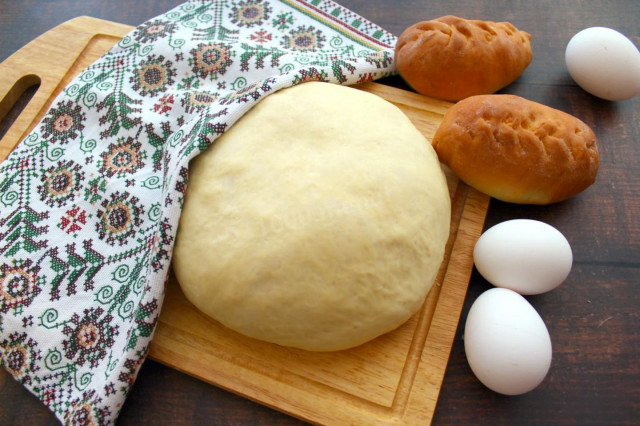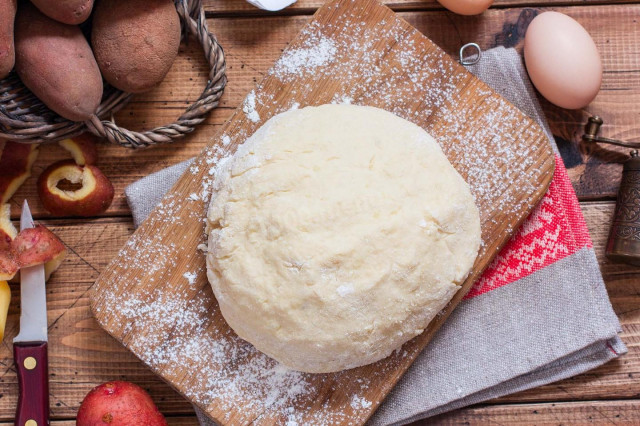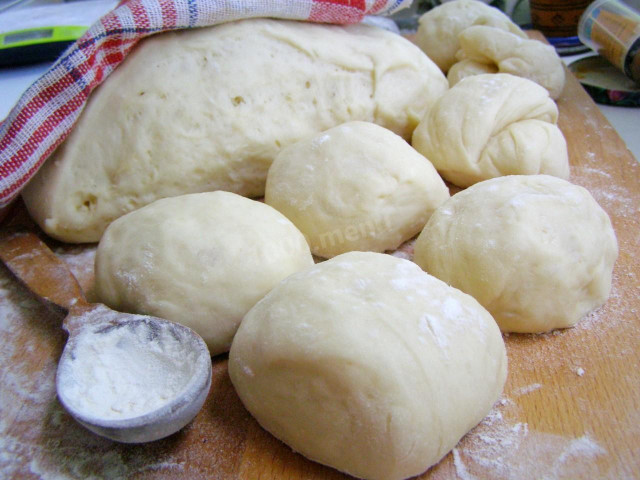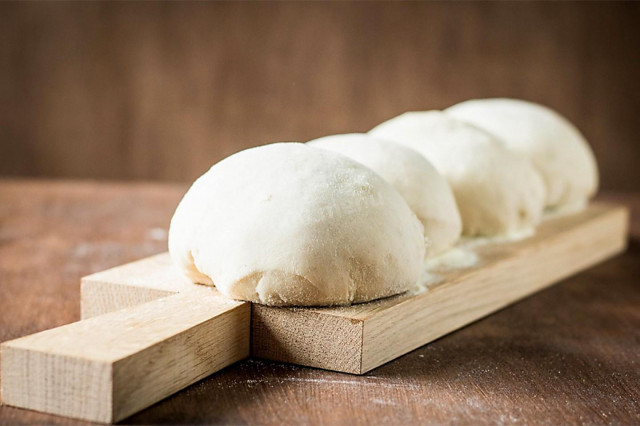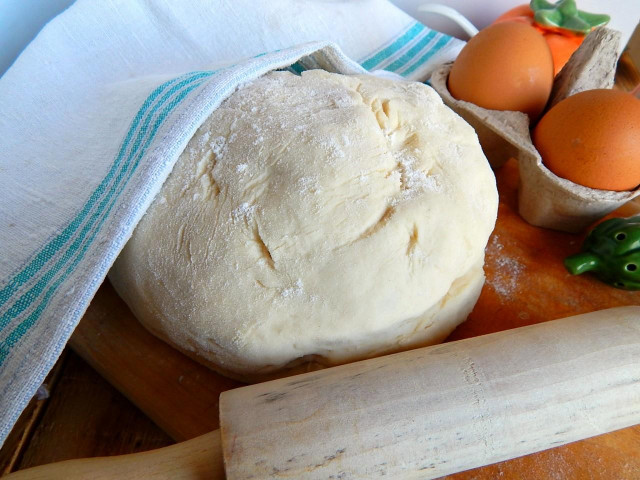Composition / ingredients
Step-by-step cooking
Step 1:
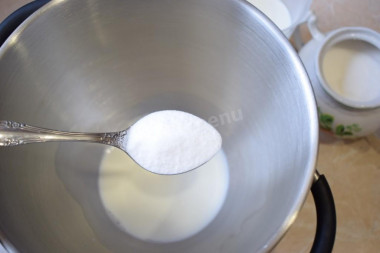
To prepare the dough, first of all, you need to make a sponge. It will help to revive dry yeast, which begins to work actively in a liquid, warm and sweet environment. To prepare the sourdough, pour half of the warm milk into the dough bowl and add sugar to it.
Step 2:
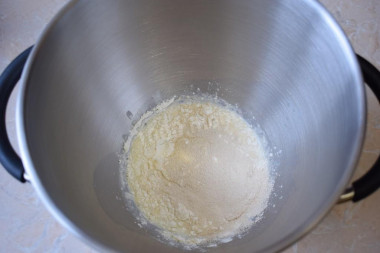
Then add the dry yeast and two tablespoons of flour and mix everything. Cover the bowl with a towel and leave in a warm place for 20-30 minutes.
Step 3:
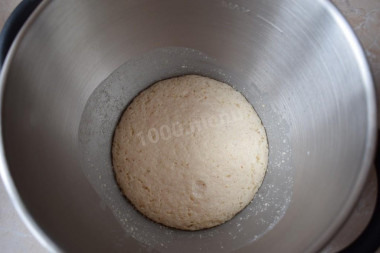
After a while, bubbles will begin to appear on the surface and fermentation will begin. The release of carbon dioxide will begin.The more bubbles there are, the more lush and airy the pastries will be.
Step 4:
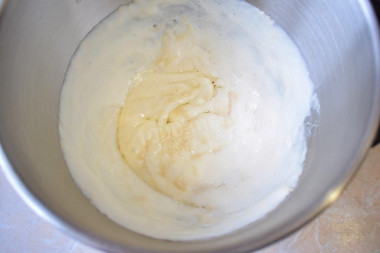
The finished sponge will look like foam. Add the eggs, the remaining milk, a pinch of salt and vegetable oil to the dough.
Step 5:
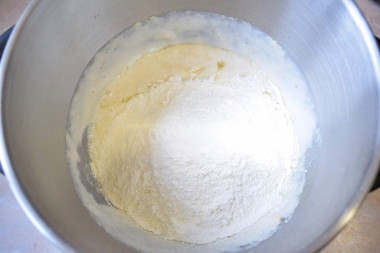
Sift the flour for the dough a couple of times through a sieve. This is necessary in order for her to be saturated with oxygen. Due to this, the finished products will be very airy. Add 500 grams of flour to the dough and start kneading the dough.
Step 6:
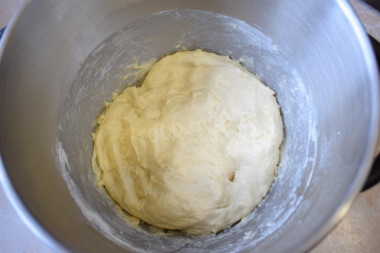
In the process of kneading, add a little more flour. Knead the dough until it almost stops sticking to your hands.
Step 7:
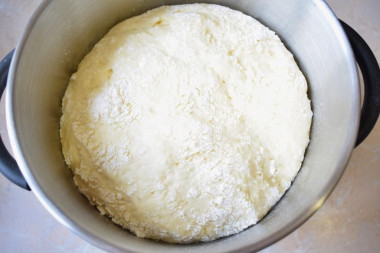
Sprinkle the finished dough with a little flour on top, cover with a towel and leave in a warm place for the approach. It will take about an hour.
Step 8:
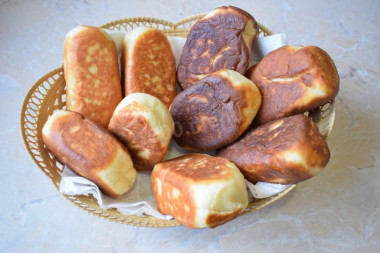
From the finished, suitable dough, form pies with any filling. Pies can be baked in the oven or fried in a frying pan. Enjoy your meal!
When preparing the dough, all products must be at room temperature. And the milk should be warm, about 30 degrees. If it is not warm enough, the yeast will not start working And in hot milk the yeast will instantly die and will not be suitable for use in the dough.
If yeast dough is prepared for pies, buns or pies, then it is always necessary to make sourdough to prepare the dough.
When working with yeast dough, there should be no drafts in the kitchen.
Try this recipe yourself!
Important! Using dry yeast, it should be borne in mind that they occur in two forms: active and instant (read the instructions carefully before use!).
Active dry yeast looks like beads or small balls. Before applying them, they must be brought out of the "sleep mode". To do this, the active yeast is diluted in warm sweet water, milk or whey. The resulting bubbles, foam or "cap" indicate that the yeast is ready for further use. Active dry yeast must be brought to complete dissolution in the liquid, otherwise, due to the remaining grains, the dough may not rise and the baking will be spoiled (yeast grains that have not dissolved in the liquid and got into the dough will not disperse on their own, which means they will not work).
Instant dry yeast is easier to use. They do not need to be activated before use. Such yeast, along with other ingredients, is simply added to the dough. As a result, the baking time is reduced.
It should also be remembered that both types of dry yeast may differ in their activity from different manufacturers.
Be prepared for the fact that flour may need more or less than indicated in the recipe. Focus not on the amount of flour, but on the desired consistency of the dough. To avoid mistakes, read about flour and its properties!
Caloric content of products possible in the composition of the dish
- Whole cow's milk - 68 kcal/100g
- Milk 3.5% fat content - 64 kcal/100g
- Milk 3.2% fat content - 60 kcal/100g
- Milk 1.5% fat content - 47 kcal/100g
- Concentrated milk 7.5% fat content - 140 kcal/100g
- Milk 2.5% fat content - 54 kcal/100g
- Chicken egg - 157 kcal/100g
- Egg white - 45 kcal/100g
- Egg powder - 542 kcal/100g
- Egg yolk - 352 kcal/100g
- Ostrich egg - 118 kcal/100g
- Whole durum wheat flour fortified - 333 kcal/100g
- Whole durum wheat flour, universal - 364 kcal/100g
- Flour krupchatka - 348 kcal/100g
- Flour - 325 kcal/100g
- Granulated sugar - 398 kcal/100g
- Sugar - 398 kcal/100g
- Vegetable oil - 873 kcal/100g
- Salt - 0 kcal/100g
- Dry yeast - 410 kcal/100g

